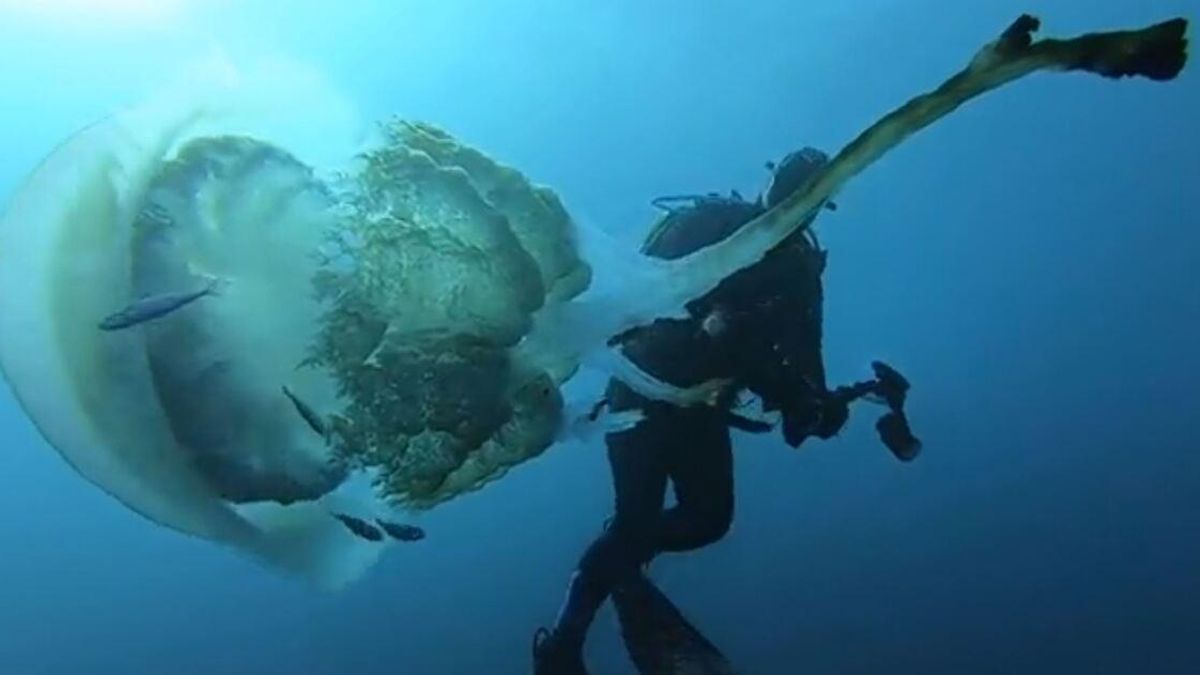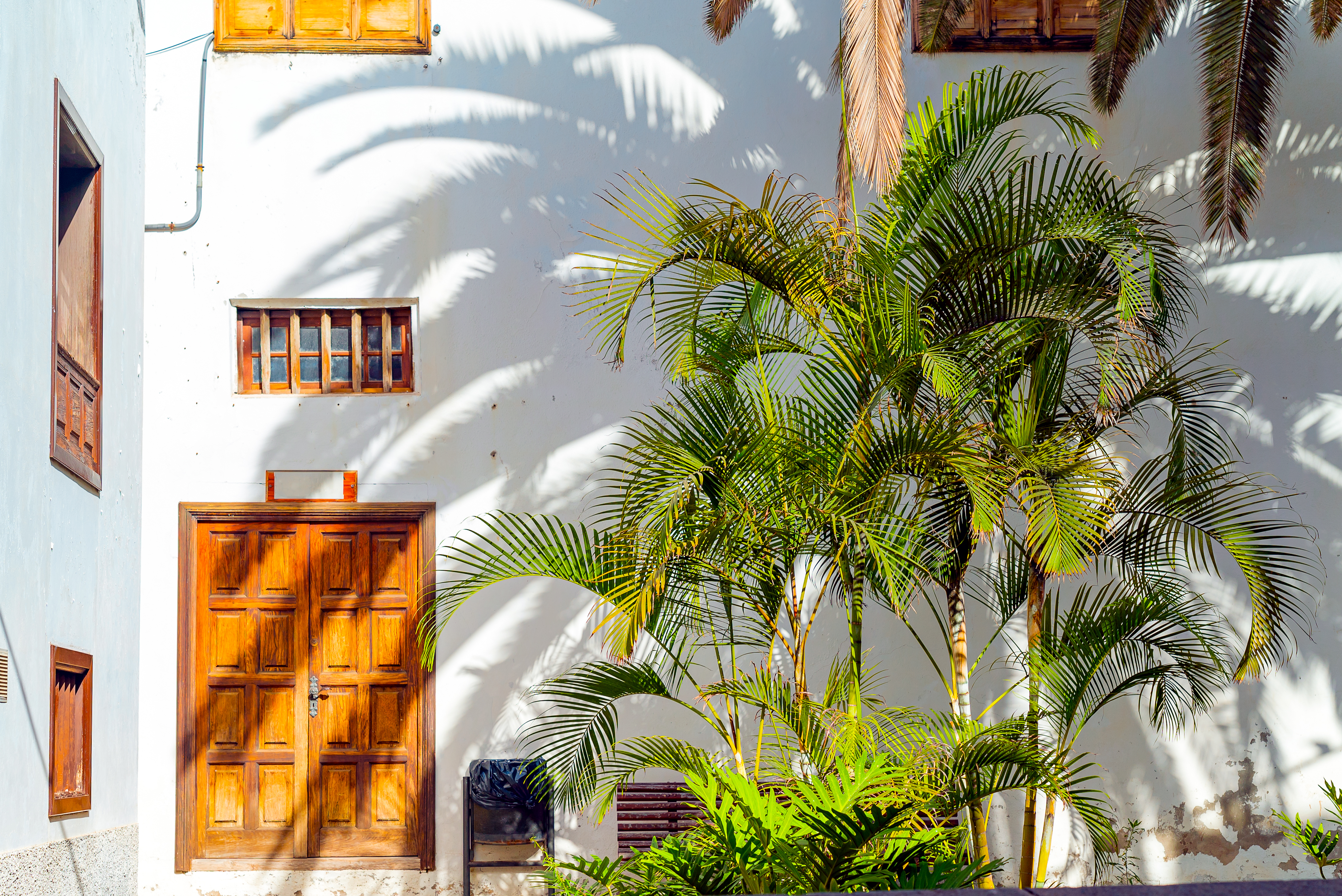The shimmering blue of the Mediterranean delivered a spectacular surprise this week. A jetski rider off the coast of San Pedro de Alcántara, Málaga, was treated to a rare and breathtaking sight: a colossal giant jellyfish in Spain, identified as the elusive Rhizostoma luteum.
Videos of the giant visitor quickly went viral, sparking awe and a wave of questions. What was this creature? Was it dangerous? And what was it doing so close to a popular Costa del Sol beach? Here’s what you need to know about this magnificent, and largely misunderstood, visitor from the deep.
What is the Giant Barrel Jellyfish (Rhizostoma luteum)?
Commonly known as the barrel jellyfish, this gentle giant is far less intimidating than its impressive size suggests.
- Size and Appearance: This is one of the largest jellyfish in the Mediterranean. Its smooth, dome-shaped bell can be milky-white or pale blue and can grow up to 60 centimetres wide, weighing up to 40 kilograms. Instead of long, trailing tentacles, it has a large, cauliflower-like mass of eight oral arms.
- Is it Dangerous? Biologists confirm that the barrel jellyfish poses no significant danger to swimmers. Its sting is very mild, designed to stun its microscopic plankton prey. However, an accidental touch with its tentacles can cause skin irritation, itching, or red, nettle-like welts. The best advice is always to admire it from a safe distance.
Why Was This Rare Jellyfish Seen on the Costa del Sol?
The appearance of a barrel jellyfish so close to shore is highly unusual. This species is a creature of the open Atlantic Ocean and is a true rarity in the Mediterranean.
Its visit was likely an accident of nature. Strong ocean currents, particularly the powerful inflow of water through the Strait of Gibraltar, can occasionally push these deep-water species towards the coastline. While this sighting was likely a chance event, it’s part of a broader trend of increasing jellyfish encounters in the Mediterranean, linked to factors like warming sea temperatures.
Jellyfish Sting Treatment: A Step-by-Step Safety Guide
Knowing how to react if you encounter any jellyfish is key to staying safe and calm on the beach.
What to Do if You See a Jellyfish
- Admire from a Distance: Never touch a jellyfish, even if it looks dead on the sand, as it can still sting.
- Notify Lifeguards: On a patrolled beach, calmly exit the water and inform the lifeguards (socorristas) so they can raise a warning flag if necessary.
How to Treat a Jellyfish Sting
If you or someone you are with is stung, follow these simple and effective first aid steps:
- Rinse with Seawater, NOT Fresh Water: Douse the affected area with salt water. Fresh water can cause any remaining stinging cells to fire, making the pain worse.
- Remove Tentacles with Tweezers: If you can see any tentacle remnants, carefully remove them using tweezers or the edge of a credit card—never your bare hands.
- Apply a Cold Compress: To reduce pain and inflammation, apply a cold pack or ice wrapped in a thin towel to the area for about 15 minutes.
- Debunk the Myths: Contrary to popular belief, you should NOT pee on a sting, rub it with sand, or douse it with alcohol. These methods are ineffective and can make it worse.
Most stings are mild, but you should seek immediate medical help if the person experiences severe symptoms like difficulty breathing, chest pain, or if a very large area of the body has been stung.
The sighting of this colossal jellyfish was a magical event—a rare glimpse of the mysterious ocean world. This gentle giant is not a monster to be feared, but a marvel of nature to be respected.
Frequently Asked Questions (FAQ)
- Q1: Is the giant barrel jellyfish dangerous?A: No, the barrel jellyfish is considered low danger to humans. Its sting is very mild but can cause skin irritation, itching, or a rash similar to a nettle sting.
- Q2: What is the first thing you should do for a jellyfish sting?A: Immediately rinse the affected area with plenty of seawater (not fresh water) and then carefully remove any visible tentacle parts with tweezers.
- Q3: Are giant jellyfish common in Spain?A: No, the Rhizostoma luteum (barrel jellyfish) is very rare in the Mediterranean and is typically an Atlantic species. Its appearance near the coast is an unusual event.




